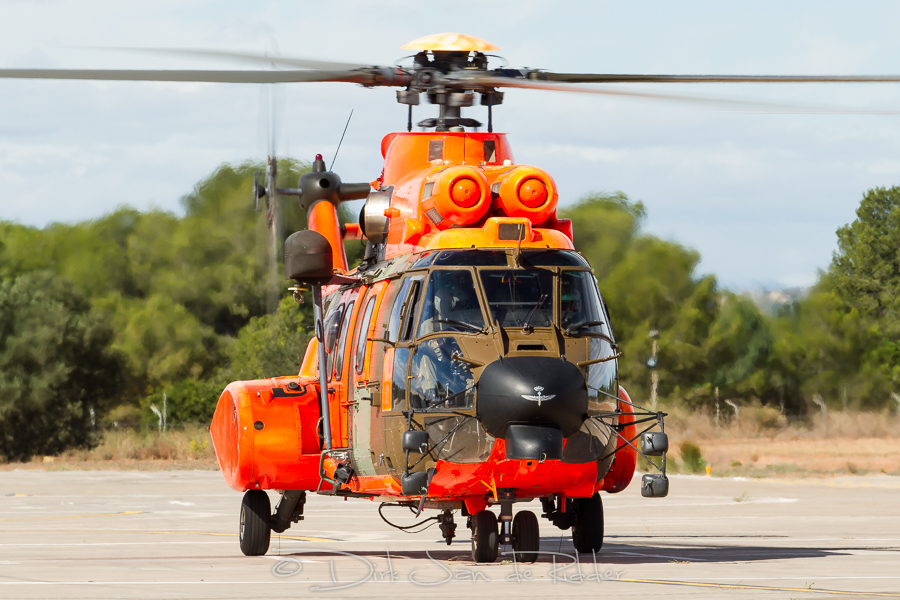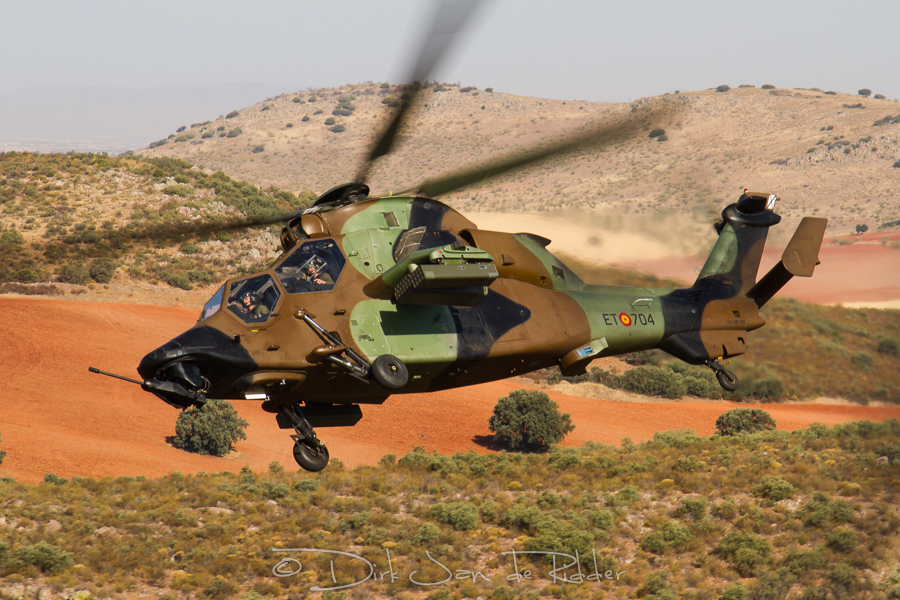No one behind

Along with the Italian Army, the Spanish Army is the air arm operating the Chinook for the longest period of time in Europe. Having entered service from January 1973, the year 2013 marks the 40th anniversary of the helicopter type in Spain.
Out of 19 Chinooks delivered in batches over the course of two decades, 17 helicopters continue to soldier on with BHELTRA V (Batallón de Helicópteros de Transporte Número V – Transport Helicopter Batallion V) at Colmenar Viejo. BHELTRA V received its new name in 1980, but it was formed as Unidad de Transporte V in 1973. Its motto is ‘Detrás de nadie’ (No one behind).
During their lifetime, the Chinooks have continuously been upgraded up to the latest standards. When the US Army completed the upgrade of its own Chinooks to the ‘Delta’ model, allied nations were offered the opportunity to upgrade their helicopters. Spain initially decided to convert half of the fleet, which began in 1990 and ended in 1994. Between 1997 and 2001 the remaining helicopters, were fully brought up to the Delta configuration. The last upgrade was concluded in 2011.

All Chinooks were equipped with Honeywell Aerospace T55-GA-714A engines, providing more power than the old -712 engine. Besides the engine, the upgrade included a Radar Warning Receiver, which informs pilots of missile launches and automatically transmits this information to the defence systems so that chaff or flares are fired, improved communication systems (including a satellite telephone) and the possibility to use three internal 800 gallon (3000 liter) fuel tanks for increased range.
The new fuel system, named ERFS II (Extended Range Fuel System) allows the Chinook to theoretically fly up to eleven hours before needing to stop for fuel. The system also enables the helicopter to land at any location and act as a Forward Arming and Refuelling Point (FARP) to arm and refuel other helicopters or even vehicles using JP-8 fuel. A single Chinook can act as a refuelling station, but fully loaded with fuel it is too heavy to ferry additional armament, so a secondary helicopter would be needed for that.

New pilots fly the EC120 with the Spanish Air Force and the EC135 of the Spanish Army before moving on to BHELTRA V for a 2-month conversion course on the Chinook, comprising six weeks of daytime flying and two weeks of night vision goggle instructions. Several of the unit’s pilots have also flown other helicopters operationally, like the UH-1H Huey. BHELTRA V has 32 pilots and 1400 allocated flying hours per year, down from 2500 hours due to the economical situation. This means nowadays more hours are logged inside the simulator.
In December of 2011, three of BHELTRA V’s Chinooks returned to Afghanistan, marking their third one-year deployment since 2007. Since their first appearance in 2007, the Chinooks have become the workhorse of the Spanish Army in Afghanistan due to their high cargo carrying capacity and high-altitude capabilities. Apart from cargo and troop transport missions, the Chinook is also used for other types of missions including support to troops in contact and medical evacuation. The only role not carried out by the Spanish is combat search and rescue, which is reserved for the Americans using the HH-60 Pave Hawks.

No other helicopter type operated by any Spanish air arm comes close to its capacity of carrying 10 tons of cargo, 33 completely equipped soldiers or up to 24 stretchers in the medevac role. Its powerful new engines come in very handy while flying in temperatures over 40 degrees centigrade and at higher altitudes. As one pilot told the authors: “We often fly to Chagcharan and then to the north, for which we have to cross a mountain pass at 8000 feet. If we have to cross that pass in the hottest part of a summer day, that could be a challenge, so we have to reduce the load accordingly. It is less challenging for us than for other helicopters though. For example, when we replaced the Cougar detachment with the Chinook, they [the Cougar pilots] needed to transport some soldiers to the north and after making pre-flight calculations they concluded they could only move one guy!”
Some 800 Spanish soldiers are deployed in Afghanistan, but they are mainly active in Baghdis. FAMET helicopters are based at Herat, so their operations are not directly linked to their own ground troops. Instead, they operate in support of ISAF, both on their own or in cooperation with the Italian and US Army. There is close cooperation with the Italian Chinooks based at Herat, but any mission can also include collaboration with A-129 Mangusta attack helicopters or American Apaches and Black Hawks. One crew is permanently on QRF (Quick Reaction Force) duty, 24 hours per day. While one helicopter is kept in reserve for maintenance, it is a logistical challenge to always have the other two Chinooks available for standby and planned missions, but it is manageable.

The current ASPUHEL (Afghan-Spanish Helicopter Unit) deployment consists of 43 personnel from BHELTRA V including six pilots. Each Chinook is cleared to fly 200 hours per deployment, before it needs to go back to Spain for maintenance. By mid-2012, ASPUHEL logged its 8000th flying hour in Afghanistan. By November, when the Chinook deployment ended, 1800 hours had been flown by Chinooks. Normally, one of the Spanish Army’s Cougar battalions would have taken over the mission, but since the Spanish (and all coalition forces) are withdrawing from Afghanistan in 2014 one Chinook will remain in country until November 2013 to assist the Cougars.
During my visit I was informed that the unit is hoping to operate the CH-47F after 2020. Its current Chinooks cannot be upgraded to Foxtrot standard due to the airframe structure and their lifespan is not infinite, so the Spanish Army will have to order new helicopters to replace them at some point. Looking at the Chinook’s service record and assuming that the CH-47F will also be able to fly for over 40 years, it might be the best investment the Spanish Army can make in tough economical times like these!
A full report appeared in several magazines, including in Rotorblatt:






Comments are closed.